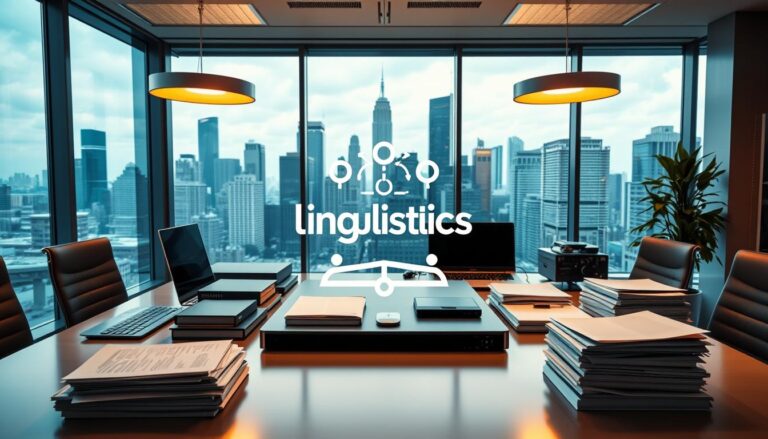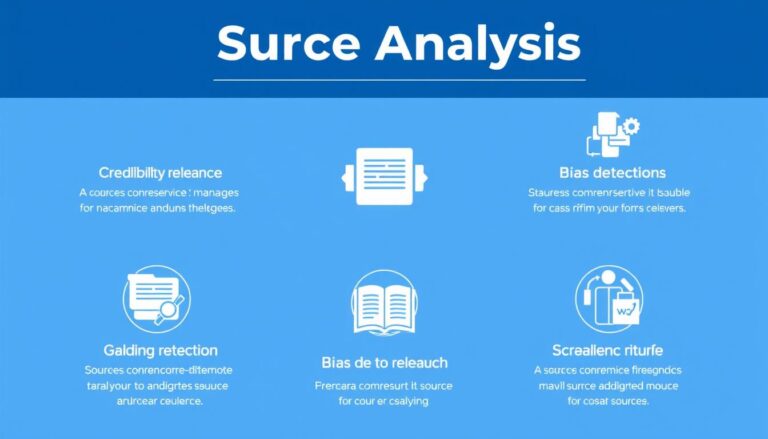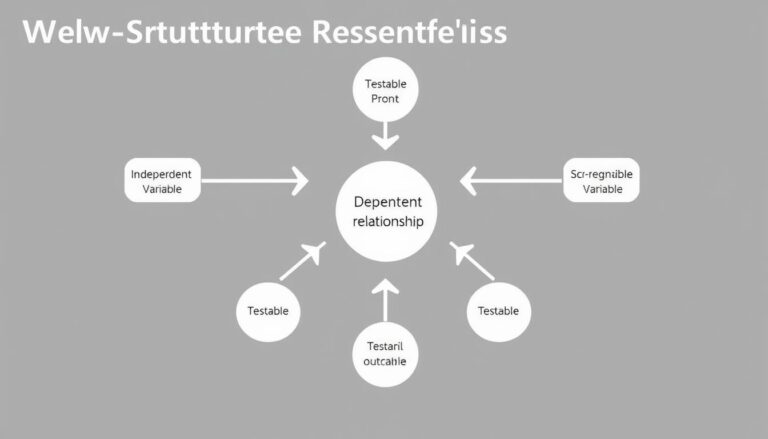Linguistic research has undergone a significant transformation with the advent of corpora, large databases of language that enable researchers to study language patterns, syntax, and semantics in depth.
By analysing vast amounts of text data, linguists can gain insights into how language is used in different contexts, from everyday conversations to formal writing.
The use of language corpora has become an essential tool in linguistic research, allowing researchers to explore language use in a more nuanced and detailed way.
Key Takeaways
- Corpora are large databases of language used to study language patterns and syntax.
- Linguistic research benefits from the analysis of vast amounts of text data.
- Language corpora provide insights into language use in different contexts.
- The use of corpora has become a crucial tool in linguistic research.
- Corpora enable researchers to explore language use in a more nuanced way.
What Are Corpora? Defining the Building Blocks of Modern Linguistics
Modern linguistics relies heavily on corpora, which are collections of written or spoken texts used for research purposes. These databases are crucial for understanding language structures, syntax, and semantics.
Basic Concepts and Terminology
Corpora are more than just collections of texts; they are structured datasets that are annotated with linguistic information. This annotation can include part-of-speech tagging, syntactic parsing, and semantic role labeling. Understanding these basic concepts is essential for working with corpora.
The terminology associated with corpora includes terms like “tokenization,” “lemmatization,” and “corpus annotation.” Familiarity with these terms is vital for researchers to effectively utilize corpora in their studies.
From Text Collections to Structured Datasets
The process of transforming text collections into structured datasets involves several steps, including data collection, cleaning, and annotation. This process is crucial for creating a corpus that is both reliable and useful for linguistic analysis.
The following table illustrates the steps involved in creating a structured dataset from a text collection:
| Step | Description | Importance |
|---|---|---|
| Data Collection | Gathering texts from various sources | High |
| Data Cleaning | Removing errors and inconsistencies | High |
| Annotation | Adding linguistic information to the texts | High |
By understanding how corpora are created and utilized, researchers can better analyze linguistic patterns and contribute to the field of linguistic research.
The Evolution of Corpora in Linguistic Research
The journey of corpora in linguistic research has been marked by substantial advancements, particularly with the advent of digital technology. This evolution has transformed the field, enabling more sophisticated analysis and larger datasets.
Pre-Digital Corpus Development
Before the digital era, corpus development was a labor-intensive process involving manual collection and analysis of texts. Researchers relied on printed materials and handwritten notes, limiting the scope and size of corpora. For more information on early corpus development, visit this resource.
The Digital Revolution in Corpus Linguistics
The digital revolution has dramatically changed corpus linguistics. Modern corpora are now vast, structured datasets that can be analyzed using sophisticated software. This shift has enabled researchers to explore linguistic patterns and trends with greater precision.
| Era | Characteristics | Impact |
|---|---|---|
| Pre-Digital | Manual collection, limited scope | Labor-intensive, limited analysis |
| Digital | Vast datasets, structured data | Sophisticated analysis, broader insights |
The digital revolution has not only expanded the size of corpora but also enhanced their complexity and utility in linguistic research. As corpora continue to evolve, they remain a cornerstone of modern linguistics.
Types and Classifications of Corpora
Corpora, or language corpora, are categorized in various ways to suit different linguistic research needs. This classification is essential for understanding the diverse applications of corpora in linguistic studies.
General vs. Specialised Corpora
Corpora can be broadly categorized into general and specialised corpora. General corpora aim to represent a language as a whole, containing a wide range of texts from various genres and styles. Specialised corpora, on the other hand, focus on specific areas or registers of a language, such as legal, medical, or academic English.
For instance, the Australian Corpus of English (ACE) is a general corpus that contains a diverse collection of Australian English texts. In contrast, a corpus focused on legal documents would be considered specialised.

Monolingual vs. Multilingual Corpora
Another significant classification is between monolingual and multilingual corpora. Monolingual corpora contain texts in a single language, while multilingual corpora include texts in multiple languages, often with aligned translations.
- Monolingual corpora are useful for studying the structure, syntax, and lexicon of a particular language.
- Multilingual corpora are invaluable for comparative linguistic studies, translation studies, and language teaching.
Synchronic vs. Diachronic Approaches
Corpora can also be classified based on their temporal focus. Synchronic corpora capture a language at a particular point in time, providing a snapshot of its current state. Diachronic corpora, in contrast, track changes in a language over time, offering insights into its evolution.
For example, a synchronic corpus of modern Australian English might include contemporary texts from the last few decades, while a diachronic corpus could span several centuries, illustrating how Australian English has developed.
In conclusion, the various types and classifications of corpora enable researchers to tailor their linguistic analyses to specific needs and questions, enhancing our understanding of language structures, usage, and evolution.
The Process of Building Effective Corpora
Building a corpus involves several key steps, from design to validation. This process is crucial for creating a reliable dataset that can be used for linguistic analysis.
Design Principles and Sampling Methods
The design of a corpus begins with defining its purpose and scope. This determines the type of texts to be included and the sampling method to be employed. Sampling methods can be random or stratified, depending on the goals of the research. A well-designed corpus is representative of the language or dialect it aims to study.
Annotation, Tagging, and Metadata
Once the corpus is compiled, it often undergoes annotation, which involves adding linguistic information such as part-of-speech tags or syntactic structures. Metadata, or information about the texts themselves, such as author demographics or publication dates, is also crucial for contextualizing the data.
Quality Control and Validation
Ensuring the quality of the corpus is paramount. This involves checking for errors in annotation, verifying the accuracy of metadata, and validating the corpus against other linguistic resources. Quality control measures help to maintain the integrity of the corpus and ensure its usefulness for research purposes.
By carefully designing, annotating, and validating a corpus, researchers can create a valuable resource for linguistic analysis, contributing to a deeper understanding of language structures and usage.
Australian English Corpora: Local Linguistic Resources
Australian English corpora have emerged as vital tools in linguistic research, offering insights into the country’s diverse linguistic landscape. These corpora are crucial for understanding the complexities and nuances of Australian English.
The development of comprehensive corpora has significantly advanced the study of Australian English. Among these, the Australian National Corpus and the Australian Corpus of English (ACE) are noteworthy. The Australian National Corpus is a large-scale repository that encompasses a wide range of texts, providing a rich source for linguistic analysis. For more detailed information on corpus development, refer to this study.
The Australian National Corpus
This corpus is designed to represent the breadth of Australian English, including both written and spoken texts from various genres and periods. It serves as a valuable resource for researchers studying the evolution and characteristics of Australian English.
Australian Corpus of English (ACE)
ACE is another significant resource, focusing specifically on Australian English. It contains a diverse collection of texts that reflect the language’s usage in different contexts, making it an indispensable tool for linguistic research.
Indigenous Language Corpora in Australia
In addition to corpora focused on Australian English, there are also efforts to document and analyze Indigenous Australian languages. These corpora are vital for preserving linguistic heritage and promoting the study of Australia’s rich linguistic diversity.
In conclusion, Australian English corpora, including the Australian National Corpus and ACE, along with Indigenous Language Corpora, are essential resources for linguistic research. They provide valuable insights into the complexities of Australian English and the country’s linguistic diversity.
Corpus Linguistics Methodologies
With the development of corpus linguistics methodologies, researchers can now explore language in depth, uncovering patterns and insights that were previously inaccessible. Corpus linguistics has become a cornerstone of modern linguistic research, offering a range of tools and techniques for analyzing large datasets of text.

Frequency Analysis and Keyword Extraction
Frequency analysis is a fundamental methodology in corpus linguistics, allowing researchers to identify the most common words, phrases, or grammatical structures within a corpus. Keyword extraction, on the other hand, involves identifying words or phrases that are significantly more frequent in one corpus compared to another, often revealing key themes or differences between datasets.
Collocation and Concordance Studies
Collocation analysis examines how words co-occur, providing insights into common expressions and idiomatic language use. Concordance studies, which display search terms in context, enable researchers to analyze how words or phrases are used in different contexts, shedding light on their meanings and connotations.
Discourse and Register Analysis
Discourse analysis involves examining language in use, beyond the sentence level, to understand how texts are structured and how they convey meaning. Register analysis focuses on variations in language use depending on the context, such as formal versus informal settings, or different genres like academic or journalistic writing.
These methodologies collectively contribute to a deeper understanding of language structure, use, and variation, making corpus linguistics a powerful tool in linguistic research.
Practical Applications of Corpora in Linguistic Analysis
The application of corpora in linguistic analysis has revolutionized the field, providing empirical evidence for various linguistic phenomena. Corpora, or collections of texts, offer a data-driven approach to understanding language structures, usage, and variations.
Lexicography and Dictionary Development
Corpora play a vital role in lexicography, the art of dictionary making. By analyzing large datasets of text, lexicographers can identify word frequencies, collocations, and contextual uses, thereby enhancing dictionary entries with real-life examples. For instance, the Australian National Dictionary utilizes corpora to include contemporary Australian English usage.
Grammar and Syntax Research
In the realm of grammar and syntax, corpora provide valuable insights into sentence structures and grammatical patterns. Researchers can analyze corpora to understand how different syntactic structures are used in various contexts, shedding light on the complexities of language.
Sociolinguistic and Dialectal Studies
Corpora are also instrumental in sociolinguistic and dialectal studies, allowing researchers to examine language variations across different social groups and geographical regions. For example, a corpus of Australian English can reveal unique dialectical features.
| Application | Description | Benefit |
|---|---|---|
| Lexicography | Analysis of word frequencies and collocations | Enhanced dictionary entries |
| Grammar and Syntax | Examination of sentence structures | Understanding of grammatical patterns |
| Sociolinguistics | Study of language variations across social groups | Insights into dialectical features |
By leveraging corpora, researchers can gain a deeper understanding of language dynamics, ultimately contributing to more accurate linguistic analyses and applications.
Computational Tools for Working with Corpora
With the advent of advanced computational tools, corpus linguistics has become more efficient, enabling researchers to conduct complex analyses with greater ease. These tools are indispensable for processing, analyzing, and interpreting the vast amounts of data contained within corpora.
Popular Corpus Analysis Software
Several software packages have been developed to facilitate corpus analysis. AntConc is a widely used tool that offers a range of functionalities, including concordancing, frequency analysis, and keyword extraction. Another popular tool is Corpus Toolbox, which provides advanced features for corpus processing and analysis.
Statistical Analysis Frameworks
Statistical analysis is crucial for understanding the patterns and trends within corpora. Frameworks such as R and Python libraries (e.g., NLTK and pandas) are commonly used for statistical analysis in corpus linguistics. These frameworks enable researchers to apply complex statistical models to their data.
Visualisation and Reporting Tools
Effective visualization is key to communicating findings in corpus linguistics. Tools like Tableau and Power BI allow researchers to create interactive and dynamic visualizations of their data. Additionally, libraries such as Matplotlib and Seaborn in Python provide extensive capabilities for creating a variety of visualizations.
| Tool | Functionality | Platform |
|---|---|---|
| AntConc | Concordancing, frequency analysis | Windows, Mac, Linux |
| Corpus Toolbox | Corpus processing, analysis | Windows, Mac |
| R | Statistical analysis | Windows, Mac, Linux |
| Python (NLTK, pandas) | Statistical analysis, data manipulation | Windows, Mac, Linux |
Corpora in Language Education and Pedagogy
Language education is being transformed by the use of corpora in innovative ways. Corpora, or large databases of language samples, are revolutionizing how languages are taught and learned.
Data-Driven Learning Approaches
Data-driven learning (DDL) is an approach that leverages corpora to enhance language learning. By using real-life examples from corpora, learners can explore language patterns, collocations, and usage contexts. This method encourages active learning and develops a deeper understanding of language structures.
Developing Teaching Materials from Corpora
Corpora are invaluable resources for developing teaching materials that are authentic and relevant. Educators can extract examples from corpora to create exercises, illustrate grammar rules, and design vocabulary lessons. This ensures that teaching materials reflect real language use, making learning more effective.
Learner Corpora and Error Analysis
Learner corpora, which contain language samples produced by learners, are crucial for error analysis and understanding language acquisition processes. By analyzing these corpora, educators can identify common errors, track learner progress, and tailor instruction to address specific challenges.
In conclusion, corpora are transforming language education by providing rich, data-driven insights that enhance teaching and learning. By integrating corpora into pedagogy, educators can create more effective, engaging, and personalized learning experiences.
Challenges and Limitations in Corpus-Based Research
Corpus-based research is fraught with challenges, including issues related to representativeness and ethical considerations. Despite the significant contributions corpora have made to linguistic research, researchers must navigate these complexities to ensure the validity and reliability of their findings.
Representativeness and Sampling Issues
One of the primary challenges in corpus development is achieving representativeness. This involves ensuring that the corpus is a fair representation of the language or language variety it is intended to represent. Sampling methods play a crucial role in this process.
The size and composition of a corpus can significantly impact its representativeness. A corpus that is too small or biased towards certain genres or registers may not accurately represent the language as a whole.
Interpretation and Context Challenges
Interpreting data from corpora requires a deep understanding of the context in which the language is used. This includes considering factors such as the social, cultural, and historical background of the speakers or writers.
Contextual information can be difficult to capture and annotate accurately, which can lead to challenges in interpreting corpus data.
Ethical Considerations in Corpus Development
Ethical considerations are paramount in corpus development, particularly when dealing with sensitive or personal data. Ensuring the privacy and anonymity of participants is crucial.
Researchers must also consider issues related to copyright and the use of copyrighted materials within corpora.
| Challenge | Description | Impact on Research |
|---|---|---|
| Representativeness | Ensuring the corpus represents the language or variety accurately. | Validity of findings |
| Interpretation | Understanding the context of language use. | Accuracy of analysis |
| Ethical Considerations | Protecting participant privacy and adhering to copyright laws. | Legal and ethical compliance |
The Future of Corpora in the Digital Age
As we step into the digital age, the role of corpora in linguistic research is poised for significant transformation. The integration of advanced technologies is set to revolutionize how corpora are developed and utilized.
Advancements in Technology
The future of corpora is closely tied to advancements in AI and machine learning. These technologies can enhance corpus analysis by providing more sophisticated tools for data processing and pattern recognition. For instance, AI can help in automating the annotation process, making it faster and more accurate.
Expanding Corpus Capabilities
The development of multimodal corpora is another significant trend. These corpora incorporate not just text, but also audio, video, and other media, providing a richer dataset for researchers. Web-based corpora are also becoming more prevalent, allowing for real-time data collection and analysis.
Dynamic Corpus Development
The concept of real-time and dynamic corpus development is gaining traction. This involves continuously updating corpora with new data, ensuring that they remain relevant and reflective of current language use.
In conclusion, the future of corpora in the digital age is bright, with numerous advancements on the horizon. As technology continues to evolve, so too will the capabilities and applications of corpora in linguistic research.
Conclusion: The Transformative Impact of Corpora on Linguistic Research
The use of corpora has revolutionized the field of linguistic research, providing a wealth of data that has transformed our understanding of language. Corpora have enabled researchers to analyze language patterns, identify trends, and develop new theories.
The transformative impact of corpora is evident in various areas of linguistic research, including lexicography, grammar, and sociolinguistic studies. By leveraging corpora, researchers can gain insights into language use, language variation, and language change.
As linguistic research continues to evolve, the role of corpora will remain crucial. The integration of corpora with AI and machine learning technologies will further enhance the field, enabling researchers to analyze large datasets and identify complex patterns. The future of linguistic research is closely tied to the development and use of corpora.





